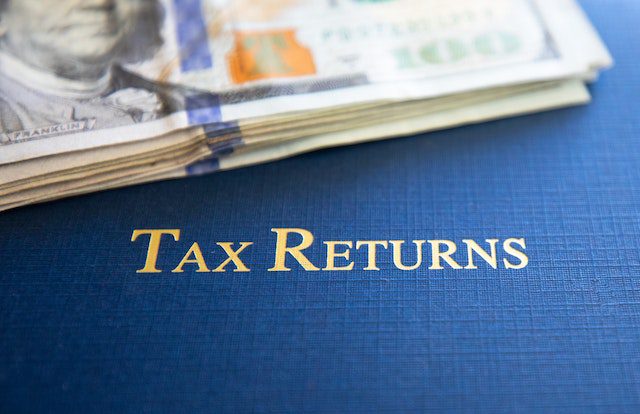Navigating the Sea Change: The New IRS Form 1099-K Tax Rule and Your Digital Wallet
The IRS, a name that evokes an emotional response for most. Whether it’s a gulp of trepidation or an assertive nod of preparedness, the Internal Revenue Service has an undeniable presence in the life of every American taxpayer. As the world continues to digitize, so does the IRS, and its recent focus has been the evolving landscape of online transactions. For anyone regularly receiving over $600 through platforms like PayPal or Venmo, it’s time to familiarize yourself with the new IRS tax rule regarding Form 1099-K. As an experienced tax attorney, I’ll be your guide on this journey, navigating the challenges and complexities together.
The New Frontier: IRS Meets PayPal and Venmo
The explosion of digital wallets and online transactions has not gone unnoticed by our friends at the IRS. As more and more of our financial lives move online, it was only a matter of time before the IRS adapted its guidelines to accommodate this shift. Traditionally, receiving more than $20,000 or having more than 200 transactions in a year from third-party payment systems meant you’d be handed an IRS Form 1099-K. This form documents your self-employment income and should be reported on your taxes. However, a recent Congressional move has lowered the reporting threshold from $20,000 to a mere $600, regardless of the number of transactions.
In an almost shocking display of understanding, the IRS acknowledged the transition challenges and pushed the rule’s implementation from 2023 to January 1, 2024. This delay aims to give tax professionals, digital payment companies, self-employed individuals, and small businesses adequate time to prepare for the upcoming changes. Think of it as the calm before the storm, a valuable window to gather your bearings.
Deciphering the Law: IRS Form 1099-K Explained
The new IRS tax rule 1099-K is not meant to cause panic or make you second guess your online transactions. Instead, its objective is to enhance tax compliance. The IRS has found that compliance tends to increase when people have to report forms such as Form 1099-K. The law hasn’t changed; it’s simply a new requirement to report earnings that are already taxable. An elegant articulation, one might say.
Who will be most affected by this change? Small businesses and individuals with part-time work should brace for more annual 1099-K forms. However, those sending money to friends to split a dinner bill or share vacation costs, or those receiving a one-off payment for an online sale, can breathe easy. The IRS doesn’t want to be the awkward third wheel in your personal transactions.
Understanding the Impact of the Law: Delays, $600 Thresholds, and Taxpayers
The implications of this rule are vast, particularly for business owners and self-employed individuals. Under the new rule, they will need to report Form 1099-K income on their taxes for every transaction covered. Each third-party platform used should send users—and the IRS—a 1099-K form reporting any single transaction of $600 or more.
Imagine receiving a 1099-K for a personal transaction by mistake. That’s where the plot thickens. In such cases, the IRS recommends reaching out to the payment platform to correct the error or attaching an explanation to your tax return. It’s like finding an unexpected ingredient in your grandma’s secret recipe; it needs a bit of explaining. The Taxpayer Advocate Service (TAS) within the IRS predicts a substantial increase in the number of 1099-K forms received due to this rule change.
However, the narrative doesn’t end here. The National Federation of Independent Business has deemed this new rule as burdensome and has actively rallied against the change. The organization lauded the delay and continues to advocate for a reversal. Amid the mixed emotions and responses, how did the delayed implementation come about? The answer lies in a cocktail of taxpayer confusion, lack of clear guidance from the IRS, and a growing backlog within the IRS. In short, the journey has been far from straightforward.
Plotting Your Course: Preparing for the New IRS Tax Rule 1099-K
Bear in mind, this new rule is delayed, not dropped. As a business owner, if you’re expecting to file a Form 1099-K, it’s essential to understand what’s required and ensure your tax preparer does too. Keeping an up-to-date record of your electronic transactions and related financial documents is crucial. Missteps could trigger an IRS audit, an event we all want to avoid. In this situation, working with a professional bookkeeper or accountant may be a wise move.
Platforms like PayPal and Venmo have already started preparing their users. They have issued warnings that users may be asked for tax information, such as a Social Security number or taxpayer ID, to continue using their account for the sale of goods and services.
As we brace for this new wave of tax regulations, remember that preparation is key. Having an understanding of the changes ahead will make navigating the choppy waters of IRS Form 1099-K rules a much smoother voyage. Let’s face it, the IRS isn’t going away anytime soon, but with knowledge, preparation, and perhaps a touch of humor, we can keep our financial ships afloat.
See Related Questions
Can I ignore Form 1099-K?
Choosing to ignore IRS Form 1099-K is a bit like deciding to pet a porcupine; it’s possible, but the result is bound to be prickly. If you’ve had more than $600 of transactions through third-party payment processors like PayPal or Venmo in a year, it’s not a matter of if, but when you’ll receive this form. This tax document is a report of your income, and brushing it off is not an option if you want to maintain a cordial relationship with the IRS.
Form 1099-K is a player in the big league of tax forms. Ignoring it could lead to a mismatch in reported income, which the IRS computer systems will flag quicker than you can say “audit.” This could bring about an unwelcome examination of your financials or worse, hefty penalties.
Remember, the IRS is a bit like an elephant; it never forgets. While the new IRS tax rule 1099-K may seem daunting, the key is understanding and properly reporting the income to keep your financial house in order. Ignore Form 1099-K? Only if you want an invitation to the IRS’s party – and trust me, it’s one party you’d rather not attend.
What are the 1099-K reporting limits?
“Is it $20,000 or $600?” This question has been echoing around the tax world lately, bouncing off the walls of confusion created by the new IRS tax rule 1099-K.
The traditional 1099-K reporting limit was a two-pronged qualifier: over $20,000 in gross payment volume and over 200 transactions in a year. But, like an unexpected plot twist in a gripping novel, Congress made an elegant articulation – lowering the reporting threshold to a singular transaction totaling $600 or more. Yes, you read that right. The shift from $20,000 to $600 is as stark as going from a bustling city to a quiet village overnight.
This seismic shift is applicable to third-party payment networks such as PayPal, Venmo, Zelle, and others. While this change may initially seem like an ambush, it’s really an opportunity to keep our financial narratives crystal clear in the eyes of the IRS. Congress believes the story of your finances should be one of transparency, not mystery. But not every American agrees with that sentiment.
What are the new rules for 1099-K?
Imagine being used to running a marathon and suddenly being asked to sprint. That’s the effect the new rules for 1099-K have had on those receiving payments through platforms like PayPal and Venmo. The traditional threshold for reporting transactions has taken a breathless plunge from $20,000 to a mere $600.
Under this new regulation, any transaction of $600 or more now triggers the need for a Form 1099-K. This form, sent by your clients or the third-party payment system you used, is your ticket to tax compliance. Picture it as a ticket to a concert – but the band is IRS, and they only play tax tunes.
In response to the challenges accompanying this major shift, the IRS has delayed the rule’s implementation until January 1, 2024. This delay provides much-needed preparation time for tax professionals, payment app companies, self-employed individuals, and small businesses.
As dramatic as these new rules for 1099-K might seem, they are a reminder to embrace the clarity they provide in our tax narratives. It’s like finding a lighthouse amidst a sea of complex IRS regulations, guiding us towards tax compliance.
What is form 1099?
To anyone unfamiliar with the universe of tax forms, IRS Form 1099 might sound like a name for a robot in a sci-fi flick. But in the galaxy of taxes, it’s not quite as fantastical, though just as important.
Form 1099 is a series of IRS documents known as “information returns.” There are several versions of Form 1099, each denoted with a different suffix and used for specific types of income. From 1099-DIV for dividends to 1099-MISC for miscellaneous income, each version is a star in the tax constellation.
Today, we’re spotlighting Form 1099-K, the belle of the tax ball. This variant reports payment transactions processed through a third-party network like PayPal or Venmo. The rules for reporting these transactions are changing, transforming Form 1099-K from a side character into a lead role in the tax saga.
Understanding Form 1099 and its variations is like acquiring a decoder ring for the cryptic language of taxes. It’s a tool to help us navigate the labyrinth of IRS regulations and, just maybe, emerge victorious.
If you need help with a tax debt or unfiled tax returns, call The Tax Defenders today for a FREE attorney consultation at 312-345-5440.







